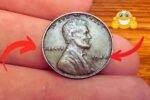1943 Copper Penny Is Creating Chaos: In the quiet corners of attics and the depths of old coin jars, a numismatic legend continues to capture imaginations. The 1943 copper penny – a coin that shouldn’t exist – has become one of the most fascinating anomalies in American currency, creating waves of excitement among collectors and historians alike.
A Wartime Anomaly with a Story to Tell
The tale begins in the midst of World War II, when copper became essential for shell casings and military equipment. In a patriotic move, the U.S. Mint switched from copper to zinc-coated steel for penny production in 1943. Over a billion steel pennies were struck that year, their silvery appearance marking them as distinct from any other Lincoln cent.
Yet somehow, a handful of copper blanks from 1942 remained in the presses. These rare few – perhaps no more than forty – were accidentally struck as 1943-dated pennies, creating one of the most famous mint errors in history. Each surviving example represents a remarkable oversight in the Mint’s quality control during those hectic war years.
When Pocket Change Becomes Priceless
The collecting world was stunned when a verified 1943 copper penny sold for $1.7 million in 2010, setting a new standard for rare coin values. More recently, another specimen changed hands for $840,000 in a private sale. These astronomical figures have transformed ordinary penny jars into potential treasure chests, sparking a nationwide hunt through old collections.
Social media groups dedicated to coin collecting now see daily posts from hopeful individuals examining their change. The dream is tantalizing – that a common-looking penny pulled from circulation might be one of these legendary rarities.
The Challenge of Authenticity
With such high stakes, the market has seen an influx of altered coins. Some unscrupulous individuals have tried plating common steel pennies with copper or altering dates on later copper coins. Reputable grading services like PCGS and NGC report being inundated with verification requests, many of which turn out to be clever fakes.
Collectors should note two key tests: a genuine 1943 copper penny won’t stick to a magnet (unlike its steel counterparts), and should weigh about 3.11 grams. Even then, only professional authentication can confirm a specimen’s legitimacy.
More Than Metal: A Connection to History
What makes these coins truly special isn’t just their monetary value, but their connection to a pivotal moment in American history. They represent the home front’s sacrifices during WWII, when even pocket change was affected by the war effort. For collectors, owning one is like holding a piece of that historical narrative – a tangible link to the past that survived against all odds.
As the search continues, the 1943 copper penny remains one of numismatics’ greatest treasures. Whether another will surface in some forgotten collection remains to be seen, but the possibility keeps collectors searching and dreaming. After all, as this remarkable coin proves, sometimes the most extraordinary finds come in the humblest packages.



